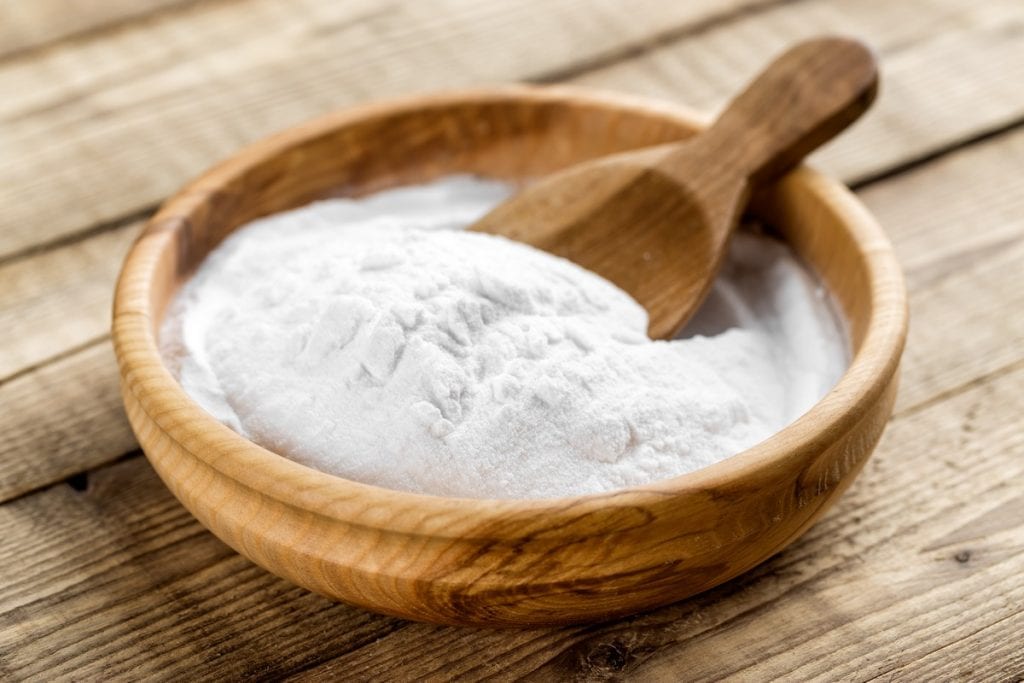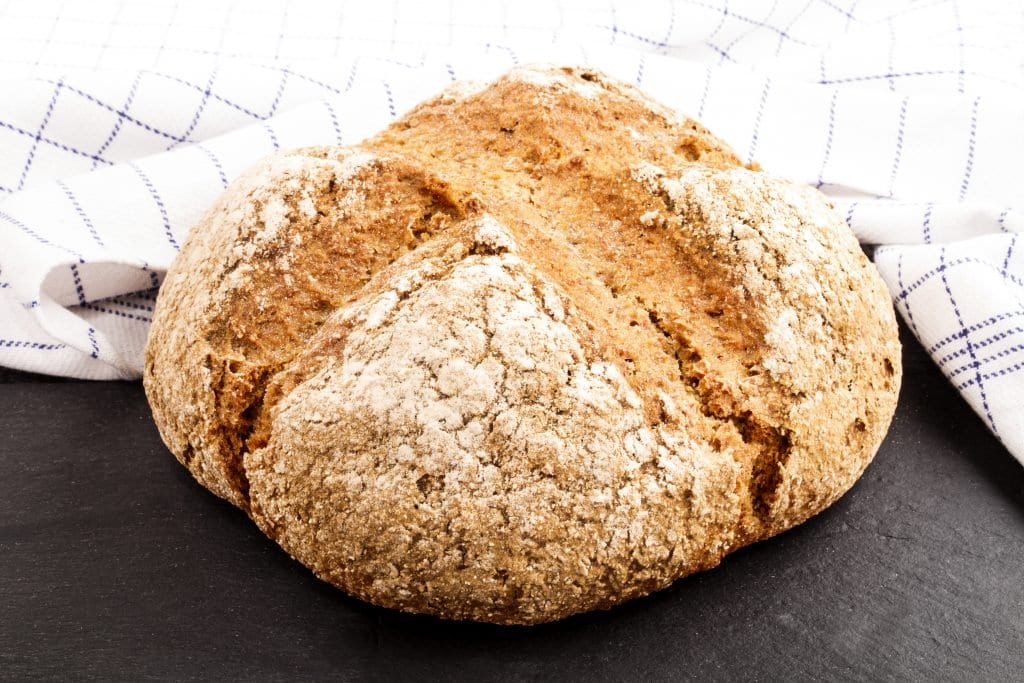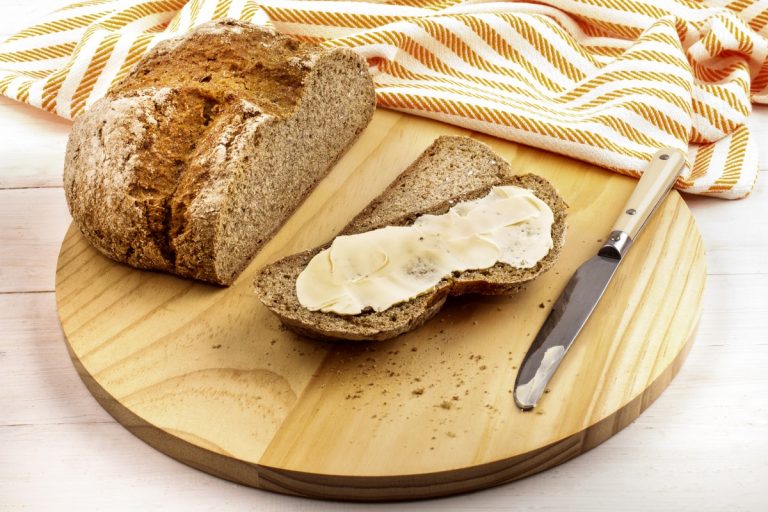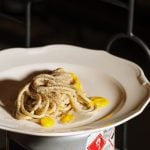Irish cuisine and soda bread
Lots of seafood arriving from the coastal areas, excellent dairy products from the pastures that outline the nation, and then meat, turnips, potatoes and bread: Irish cuisine is authentic and sincere, which on the occasion of St. Patrick's Day unleashes all its specialties. Inevitable - and not only on March 17th - is soda bread, one of the most famous yeast-free breads in the world, a rustic-looking loaf made with baking soda that's a symbol of the local table. A simple product with a crisp crust and very compact crumb, generally eaten warm, lightly toasted and spread with a little butter, to be eaten over the course of very few days as it tends to dry out very easily. And to think that it once served to feed entire families…

Soda bread and the advent of baking soda
It is the typical bread of Irish grandmothers, a flavour that evokes childhood memories and homespun scents, strongly linked to the culture of the island but which owes its birth to Native Americans. It was them in fact who were the first to use a sort of natural soda bicarbonate obtained from the ashes of wood to make bread dough rise. However, it was the Irish who promoted and spread its consumption, who made bread similar to the current one for the first time in the 19th century, with the introduction of bicarbonate in the United Kingdom. The ancient Egyptians already used "natron," a similar substance used as soap and also precious for embalming, but the world had to wait until the end of the 18th century for French chemist Nicolas Leblanc to isolate bicarbonate for the first time. To make it famous, however, was Solvay, company founded in 1863 thanks to the innovative process developed by Ernest Solvay: the industrial manufacture of sodium carbonate starting from sea salt, ammonia and carbonic acid, which has gone down in history as the Solvay process.
The bread that saved Ireland
Another turning point came with Austin Church, an American doctor who, together with entrepreneur John Dwight, developed the company that was the first to promote the product in America under the Arm & Hammer brand. But let's go back to Ireland and to that peasant bread born out of necessity: the Great Famine that hit the country in the mid-19th century, with the consequent limited access to food, forced the people to rely on humble, repurposed cuisine. In particular, damaging to the Irish population was potato peronospera, an infestation that destroyed the crops of one of the country's main foods, the nutritional base of most families, who thus found themselves concentrating on bread, the only available sustenance. And soda bread, in particular, was perfect for the period of misery they were experiencing: quick and simple to prepare, cheap and ideal to bake directly on the stove, modest yet tasty.

The recipe and the cross to drive away evil spirits
The famine finally ended. However, soda bread has endured as the symbol of a proud people, faithful to itself. Flour, buttermilk, salt and baking soda are the traditional ingredients of the recipe, handed down from generation to generation in every Irish family. Contemporary bakeries have not missed the opportunity to revisit the product, as have cooks and enthusiasts: an egg is often added, or oatmeal flakes are added on the surface, the flour is preferably wholemeal, baking takes place in the classic home oven, while originally the loaf was placed on a sort of round plate positioned directly over the stove. The shape, however, is the same as it always was, round with a cross on the surface, a common custom in the past, one of the many superstitions related to food, according to which the mark would drive away evil spirits that would otherwise sit on the dough.
Soda bread recipe
Ingredients
180 g wholemeal flour
180 g “0” flour
300 ml buttermilk
½ tsp baking soda
Salt
Pour the flours with the salt and baking soda into a bowl. Stir, make a hole in the centre and pour in the buttermilk. Knead on a floured surface and shape the bread into a round loaf. Score a cross-shaped cut on the surface and bake at 200°C for about 30 minutes.
by Michela Becchi


 Meloni: "Tariffs? If necessary, there will be consequences. Heavy impact on agri-food sector"
Meloni: "Tariffs? If necessary, there will be consequences. Heavy impact on agri-food sector" The Government honours the greats of Italian cuisine, from Bottura to Pepe. Massari: "Thank you, Meloni, the only one who listened to us"
The Government honours the greats of Italian cuisine, from Bottura to Pepe. Massari: "Thank you, Meloni, the only one who listened to us" "We must promote a cuisine that is not just for the few." Interview with Massimo Bottura
"We must promote a cuisine that is not just for the few." Interview with Massimo Bottura Wine was a drink of the people as early as the Early Bronze Age. A study disproves the ancient elitism of Bacchus’ nectar
Wine was a drink of the people as early as the Early Bronze Age. A study disproves the ancient elitism of Bacchus’ nectar "From 2nd April, US tariffs between 10% and 25% on wine as well." The announcement from the Wine Trade Alliance
"From 2nd April, US tariffs between 10% and 25% on wine as well." The announcement from the Wine Trade Alliance







